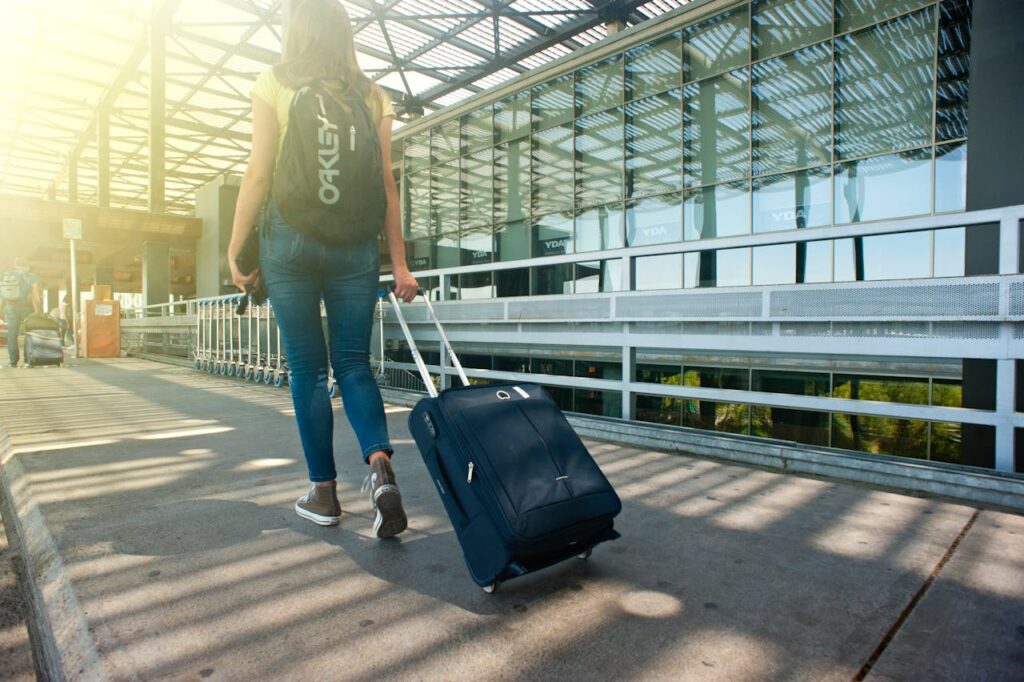The yearly cost of customer churn for U.S. companies is $168 billion. This figure clearly indicates why developers and marketers should focus on app customer retention.
In the highly competitive travel app market, acquiring users is just the beginning of a brand’s journey. The real challenge lies in retaining them, ensuring your app remains relevant in their travel planning process long after the initial download. With countless travel apps vying for attention, brands must employ strategic methods to maintain user engagement and build long-term loyalty.
In this article, we’ll dive deep into actionable strategies that travel apps can implement to boost post-download success, from personalized user experiences to seamless app functionality and dynamic engagement techniques.
Let’s explore seven key strategies to navigate the complexities of app customer retention in today’s competitive travel app landscape.

Photo by Gustavo Fring
Seven app customer retention strategies
1. Personalized onboarding for first-time users
Do you know that 1 in 3 marketers spend almost half of their budgets towards personalization? The journey toward user retention begins the moment someone downloads your app. A seamless and personalized onboarding experience is critical to keeping users engaged and avoiding app abandonment. During the onboarding process, travel apps should highlight their core value proposition while keeping it personal.
For example, leveraging data such as the user’s location, past travel behavior, or preferences gathered during the sign-up process allows apps to tailor their welcome flow unique to each individual. A well-crafted, data-driven onboarding process encourages users to explore the app’s features without overwhelming them.
Simplifying sign-up processes with options like social media logins or Google account integrations can also reduce friction.
Example: Airbnb customizes its onboarding process based on user preferences, showing accommodations or experiences that match what users have previously searched for or expressed interest in. This level of personalization creates an instant connection and gives users a reason to return to the app.
2. Notify customers of the best offers
A travel app’s success in retaining users is also tied to understanding seasonal booking patterns and optimizing marketing strategies around them.
A prime example is the early bird booking season, which peaks in the first quarter of a year
when most travelers plan their vacations for spring and summer. For instance, in the first quarter of 2024, Indian airports saw a remarkable influx of 97 million travelers. A decade ago, it would have taken an entire year to achieve this feat. Now, a lot of people book their travel during the first quarter of the year.
It means app developers and marketers should use the 4th quarter of the year to prepare their travel apps for the booking surge. They should ensure that both the app and its marketing campaigns are finely tuned.
During Q4, app marketers should also focus on app functionality improvements, fixing bugs, and ensuring fast, responsive performance, as poor technical performance can quickly drive users away. Moreover, during this period, You should take the time to ramp up email and in-app messaging campaigns, reminding users about upcoming travel deals, flight discounts, and vacation packages to build excitement for the bookings.
Example: Hopper, a popular travel app, strategically sends reminders and price drop alerts to capture users’ attention just as they’re gearing up for vacation planning, ensuring the app stays top-of-mind when booking season begins.

Photo by Oleksandr P
3. Push notifications & in-app messaging for real-time engagement
Push notifications boast an impressive open rate, with figures reaching as high as 90%. Effective push notifications and in-app messaging are essential tools for keeping users engaged after they’ve downloaded your app. By delivering timely, relevant, and personalized messages, travel apps can offer value that keeps users returning to the platform.
However, these notifications need to strike the right balance. Overuse or sending irrelevant content can lead to users disabling notifications, ultimately resulting in disengagement. Instead, notifications should provide real-time value, such as alerts for upcoming travel dates, price drops, or personalized recommendations based on previous bookings or searches.
Example: TripIt, for example, uses push notifications to send users real-time updates on flight delays, gate changes, or baggage claim information. These updates enhance the overall travel experience, ensuring users rely on the app for critical travel information.
4. Loyalty programs & exclusive offers
52% of American shoppers are inclined to enroll in a loyalty program for brands from which they frequently buy. Loyalty programs are one of the most effective tools for app customer retention in the travel industry. Travel apps that reward frequent bookings or app engagement with exclusive deals, points, or discounts not only incentivize repeat usage but also cultivate long-term loyalty.
Creating a well-structured loyalty program can offer users a sense of exclusivity, making them feel valued. Apps should offer tiered rewards based on engagement levels, providing a reason for users to stay active on the platform. For instance, offering exclusive discounts for users who book multiple trips through the app or earn points for referring friends can turn occasional users into regular ones.
Example: Booking.com’s Genius program rewards frequent users with discounts and perks like free room upgrades or priority customer service. By offering tangible benefits, the platform keeps users engaged and encourages repeat bookings.
5. Seamless user experience across devices
In today’s digital age, travelers expect a seamless experience across various devices, from desktops to mobile phones and tablets. App developers need to ensure that their travel app offers a consistent and intuitive user experience, regardless of the device. It is crucial to maintaining user engagement.
A poorly optimized app or a glitchy user experience on mobile can lead users to abandon your platform in favor of competitors. To avoid this, brands should invest in responsive app design.
They should make sure the app functions smoothly across all screen sizes and operating systems.
The goal is to provide users with a hassle-free experience that makes booking, managing trips, and accessing travel information as easy as possible.
Example: Expedia delivers a uniform experience across its desktop and mobile platforms, allowing users to seamlessly switch between devices without losing track of their booking progress or search history.
6. User Feedback & Continuous Improvement
56% of consumers report that a company’s reaction to a review has altered their perspective of that business. Listening to users and continuously improving your app based on their feedback is critical to retaining them in the long term. Travel apps must keep evolving to meet user expectations and stay competitive. Regularly soliciting user feedback, whether through in-app surveys, app store reviews, or customer support, gives brands direct insight into what’s working and what isn’t.
Brands should actively respond to user feedback by addressing issues and implementing requested features or improvements. This proactive approach not only strengthens the app’s functionality but also fosters trust and loyalty among users, who feel their concerns are being heard.
Example: Skyscanner frequently releases app updates that address user-reported bugs, add new features, or enhance the app’s performance based on feedback. This commitment to improvement reassures users that their experience matters.
7. Strategic partnerships and cross-promotion
Partnering with other brands or apps within the travel ecosystem can be a powerful way to increase customer app retention. Cross-promoting services such as car rentals, accommodations, or local experiences within your app keep users engaged throughout their travel journey, offering them added convenience and value.
For example, a flight booking app that also offers seamless hotel or car rental bookings within the same platform makes it easier for users to plan their entire trip in one place. Strategic partnerships also provide opportunities for special promotions or discounts, further incentivizing users to stay active within your app.
Example: KAYAK’s partnerships with rental car companies and hotel chains allow users to book their entire trip—flights, hotels, and cars—all in one place, providing a one-stop shop for travel planning and increasing the likelihood of user retention.
Conclusion
The post-download phase is where the real work begins for travel app marketers. By focusing on personalized onboarding, Q1 readiness, real-time engagement, loyalty programs, seamless user experiences, and continuous improvements, travel brands can build strong, lasting relationships with their users.
In today’s competitive travel app market, retaining users requires a mix of innovative strategies and user-centric approaches. Ultimately, success comes from delivering a consistently excellent experience that makes travel planning more accessible, more convenient, and more enjoyable for users.
Are you an app developer looking to maximize user retention and engagement? Leverage AVOW’s mobile OEM advertising services to reach your audience where they spend the most time—on their devices. Discover how strategic ad placements can enhance your app’s visibility and success. Get started today!
Want to unlock the full blueprint of how to build and market a travel app? Discover all the secrets in our Ultimate Guide to Building and Marketing a Travel App!
About the Author







